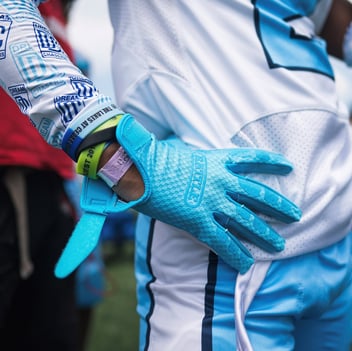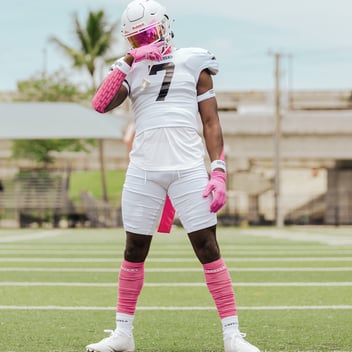Importance of Ball Security

Receiving the ball is one thing but holding on to the ball is another. Some even consider ball security statistics second in importance only to the score of the game. Stats such as interceptions, fumbles, and turnover margin are often used to explain outcomes of games. As every running back and wide receiver knows, ball security = job security.
How is Ball Security Evaluated
Luckily, ball security is a skill that can be taught and refined. It helps, however, to have some good raw material to work with. When evaluating potential running backs or wide receivers, this is an easy skill to scout.
First, take a look at the stats on fumbles. Then, if available, look at film of those games where a fumble occurred and watch the play. Or go to a few games to evaluate ball security. Does the back or receiver have the ball too far away from the body? Was the ball handed off poorly by the quarterback?
Going beyond the stats and reviewing the plays to see why a fumble occurred is key. This lets you know the cause and lets you know what skills to focus on for improvement.
How to Carry a Football Securely
Holding the ball the proper way makes all the difference for ball security. First, the ball should never be carried away from the body. It should be snugly against the solar plexus, just below the ribs. The inside of the ball should be tightly secured against your chest. This high and tight position makes it extremely difficult for defenders to strip the ball.
In addition to ensuring that the ball is carried high and tight, it is important that the ball carrier establish a minimum of 3 and a maximum of 4 points of contact.
First point: The front tip of the ball should be covered completely by the fingers or the palm. The ball carriers physical build will determine which grip is used.
Second point: The outside panel of the ball should press against the ball player’s forearm and the fingers of the carrying arm should be pointed at the body. The forearm should never touch the body.
Third point: The inside panel of the ball should press against the ribs and rest slightly forward on the abdomen. The elbow should be as close to the body as possible to prevent exposure of the backside area and protect against punch-outs.
Fourth point: Placing the off-hand on top of the ball makes a fourth point of contact. This is used when the ball carrier encounters or anticipates encountering contact that prevents him from becoming the aggressor when executing a stiff arm or flipper lift with the off arm.
Carrying the Ball with Two Hands
Running inside takes the ball carrier into the territory of offensive linemen, defensive ends, and linebackers who are continuously looking for chances to strip the ball. Running inside often requires carrying the ball with both hands. This means gripping the football with fingers over the tip and the other end of the ball in the crease of the arm, and the arm held close to the body. Then bring the other hand over to cover the ball. The ball should be resting on the solar plexus and the arms are clutching the ball in such a way that no defender can get a grip on the ball and rip it out of the ball carrier’s grip.
Switching Hands While Carrying the Ball
Carrying the ball with both hands is more secure but makes running slower, while carrying it with one hand is less secure but makes running faster. There will be a time when the ball carrier needs to run fast. In general, the ball is carried on the side that is the farthest from the defense so your body can act as a shield against the ball being stripped. Since ball carriers are often running from one side of the field to the other, switching the ball to the outside is crucial.



